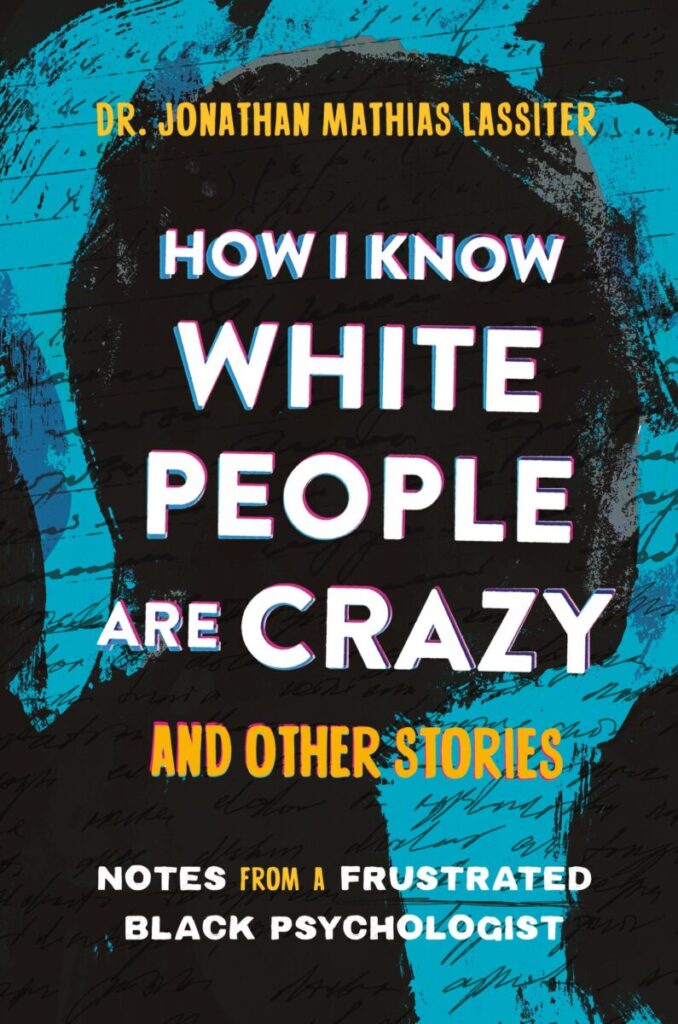By Terri Schlichenmeyer
It’s enough to make you lose your mind.
You see your goal, but there’s a barrier in front of it, a barrier that makes no sense. Other people don’t have to jump through hoops or over walls to succeed, feel safe, or get help so why do you? In “How I Know White People are Crazy and Other Stories” by Dr. Jonathan Mathias Lassiter, you’ll see that an old nemesis has a new name.
He says he is not angry.

Sadly, Lassiter says, anyone can be on the receiving end of whiteness mindset, but it happens most often to the majority-minority including Black people, Asians, woman, and to gay people like him.
He says that his grandfather lived under racism and it showed: he loved his children, but didn’t feel that he could demonstrate it. Lassiter’s father parented similarly because that’s all he knew. Living low-income also affected Lassiter’s mental health, as did the barriers he was forced to overcome in college due to racism and the oppression he felt because of his sexuality. Seeing what could be, if there were no such things as racism and oppression, didn’t help.
Through his work as a licensed clinical psychologist and the patients he’s treated, he knows his experiences are not unique. He also knows that whiteness mindset is not limited to higher education or the workplace and to combat it, we first have to admit that whiteness is not the concern. The mindset itself and what it does to mental health are bigger issues, and becoming educated is a great way to combat them.
Don’t be surprised if you’re a little confused at the outset of “How I Know White People are Crazy and Other Stories.” It is confusing; Dr. Jonathan Mathias Lassiter writes quickly with a whirlwind of ideas that circle back to one another like ripples in a pond on a windy day. It might make you want to just back away.
Instead, stick around and trust that the meat of the book is coming through stories of real-life counseling and of Lassiter’s own life, experiences, and family history. These tales eventually settle the chaos down, offering the clarity missing in the opening pages and allowing readers to see “whiteness mindset” in action and to understand the conflicts within it. You’ll be able to cleanly see where Lassiter’s frustration lies, and what can be done about it.
Just know that to get there will take some doing and patience with “How I Know White People Are Crazy and Other Stories.” Try it, though. Persevere, and you might not mind.




